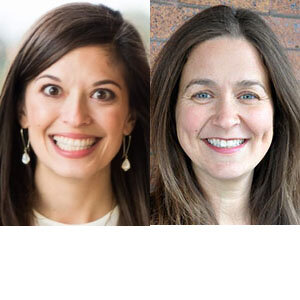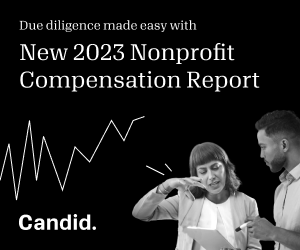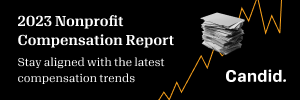Seven lessons from a $7 million Scott-Jewett gift

Last June, Repair the World received a phone call that set in motion an exciting series of events for both the organization and a national service movement. We received a $7 million gift from MacKenzie Scott and Dan Jewett to expand our efforts to mobilize Jews and their communities to take action to pursue a just world.
We had just seen a near doubling of Repair’s budget and staff as we built initiatives amid the pandemic to serve alongside our neighbors, boldly living out our Jewish values. As we announced at the time, this gift will strengthen our team and dramatically accelerate how we grow meaningful service and Jewish learning opportunities for young adults—from efforts to advance education justice and racial justice, meet the needs of community members alongside service partners at soup kitchens and urban farms, and much more. We’re proudly working toward one million acts of service and learning by 2026.
In the spirit of our organizational value of action and learning, na’aseh v’nishma, we’ve already learned many lessons from receiving this large, unrestricted gift. Seven key lessons learned about how best to leverage and maximize the impact of such a gift include:
1. Trust is transformative. The trust that Scott and Jewett put in Repair in making this gift has shifted how we view our work and ourselves. The validation and trust it signifies go beyond the funding—it is the fuel that will rapidly accelerate our impact, growth, reach, and ability to achieve our goals. We’ve enhanced our visioning and planning, and this gift will continue to broaden our visibility as we strive to fulfill our mission.
2. Don’t underestimate funders’ curiosity and support. Why was Repair well prepared to accept this unrestricted gift? Our funders’ curiosity and inquisitiveness had put us in a position where we had already put in the work, shepherded by our board, to develop materials like an adaptive strategic plan, multiyear budget, and transparency of resources. In addition, many of our funders had lightened the load for their grantees during the pandemic; grant and reporting processes had been streamlined and, in some cases, one proposal could be used for multiple donors. We are grateful for the crucial role our funders have played in building our legitimacy, supporting us consistently, and asking thoughtful questions to strengthen our organization.
3. Cultivate an abundance mindset. We were given the capacity and space to think expansively and with an “abundance mindset” about how to make the greatest impact to meet our mission. This has been a tremendous opportunity, yet also a challenge to lead our team through a change management process to shift away from a “scarcity mindset” in how we approach our planning. To leverage this gift, we needed a strategic, thoughtful, and collaborative process that examined Repair from a 360-degree perspective.
4. Ensure a collaborative process. The size of this gift significantly accelerated the pace at which we could implement our strategy. To ensure what we were envisioning was informed by our stakeholders, we took the approach of transparently opening ourselves up for input. Alongside external consultants from Third Plateau, we conducted an extensive listening tour over four months with 199 of our stakeholders, staff and board members, alumni, funders, and partners. This process was an opportunity to listen, explore our stakeholders’ best thinking on how to make the most impact, and build alignment with our strategic priorities and plan. We leaned into our value of strengthening each other, hitchazkut, to work toward a stronger outcome.
5. Grapple with a “both/and” perspective. Our collaborative approach gave us multiple perspectives and opinions on how we could make the most impact. We grappled with complexity to balance the desire to do something big, bold, and ambitious with the opportunity to strengthen our foundation for the long term. Only after listening to our stakeholders and completing our strategic planning did we arrive at four interconnected spending priorities that accelerate us in the short-term, sustain us for the long-term, and hold a “both/and” perspective, e’lu v’elu, on which to build our Jewish service movement:
- Catalyzing our impact by expanding national partnerships and our Jewish educational strategy. In fact, we shared the funding with our partners to build the field in ways that would be inconceivable on our own.
- Strengthening our team by more deeply investing in staff, fellows, corps members, and DEI work. Our people are our most precious assets.
- Telling our story by expanding our marketing, data, and development capacity and systems to build the Jewish service movement, engage more people in service, and drive resources to Repair.
- Securing our future by building operational reserves and pursuing additional investments.
6. Invest with your values. Knowing this is likely a one-time gift, we strategized on how we might secure our future to build operational reserves. Our Finance Committee undertook a six-month research process to identify an investment strategy for our modest operating reserves that aligns with our commitment to justice and Jewish values. We are grateful to our partners at the Jewish Community Federation and Endowment Fund (Bay Area) for pioneering this work of bringing together Jewish and justice values into their investing strategy.
7. Leverage for additional support. We’ve also begun to intentionally leverage this gift to build on our momentum. For example, at the end of our strategic planning process, we received a multi-million dollar grant from the Jewish Community Response and Impact Fund to accelerate the pace of our expansion specifically in national partnerships and our Jewish educational strategy. Our storytelling spending priority also gives us an unprecedented runway to invest early in storytelling strategy building, advanced data collection and research, and dynamic fundraising to ensure we can continue to leverage this gift.
Many of the organizations that received funding from Scott and Jewett have chosen not to disclose the size of their grants. We decided early on to be transparent and celebrate the gift publicly with our stakeholders, hoping that this investment would inspire others. Some donors have asked us if we still need donations. Our answer is, unequivocally, “Yes.”
This generous gift does not replace the consistent, ongoing support for our core programming, and we are not using the Scott-Jewett funding to fill gaps. This gift will transform, build, and grow our Jewish service movement. Our vision is much larger than the gift we received, so leveraging it to match the vision is a crucial piece of our overall strategy. For example, in Repair’s local programming, at least 50 percent of support comes from area funders; these funders’ ongoing—not one-time—gifts ensure sustainability and continued service in communities across the country. While some wondered if the multi-million-dollar gift might deter others from giving, we have found the opposite to be true. It has inspired additional investment.
Scott and Jewett’s gift was Repair’s most significant funding to date from a secular, non-Jewish funder. We appreciate this trust-based approach to building bridges across lines of difference, fostering empathy for one another, and furthering social change. These are universal values that are deeply rooted in our Jewish values. As a Jewish community, we can all feel a sense of pride that our Jewish values grounded this investment in organizations like us. At the intersection of Jewish impact and community impact, there is a tremendous opportunity for increased investment in our Jewish, faith-based work, to serve universal needs. We are just at the beginning of our ambitious plans and know that our ability to thrive will depend on collaboration so that we can strengthen our communities and fulfill our mission.
Kate O’Bannon is chief strategy officer and Cindy Greenberg is president and CEO of Repair the World.




